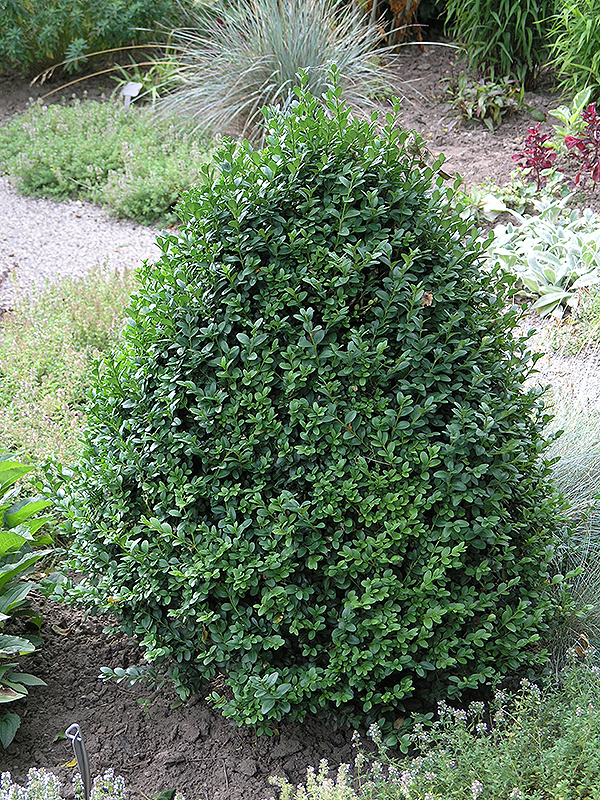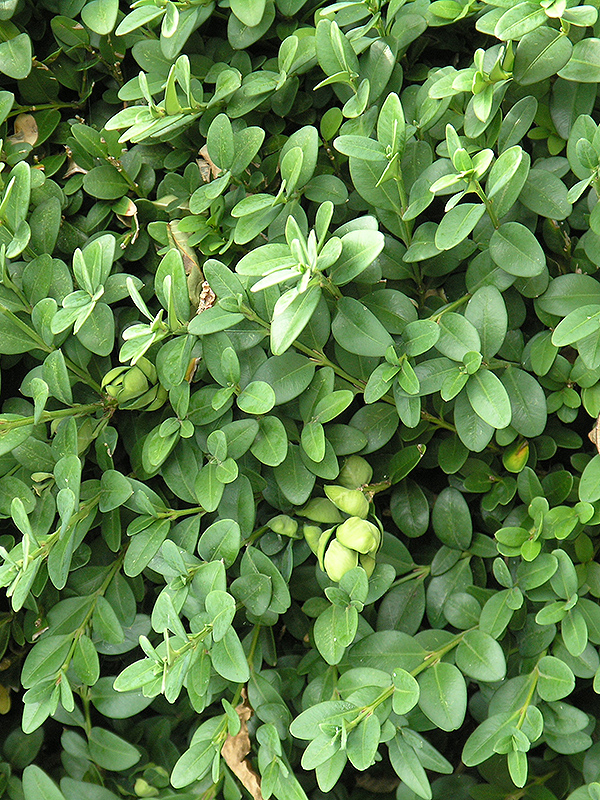
Woody > Buxus > Buxus 'Green Mountain'
Buxus
'Green Mountain'
Green Mountain Boxwood
Origin: A hybrid between B. sinica var. insularis and B. sempervirens. Introduced by Sheridan Nurseries of Glen Wiliams, Ontario, Canada.
Mike's
Opinion


"
Being English I have an affinity for the boxwood. Since the true English boxwood (Buxus sempervirens) is difficult for us to grow in Ontario, the hardier Korean crosses do the job although never reaching the size of their English cousins. Underused as a foil plant in the garden, it is suited to both sun and shade making it one of the most versatile evergreens that the gardener can grow. Clipped for formality it also helps minimize twig damage during heavy winter snows.
Michael Pascoe, NDP., ODH., CLT., MSc. (Plant Conservation)
"
| Family |
| Buxaceae |
| Genus |
| Buxus |
| Cultivar |
| 'Green Mountain' |
| Category |
| Woody |
| Type |
| Shrub (evergreen) |
| USDA Hardiness Zone |
| 5-9 |
| Canadian Hardiness Zone |
| 4 |
| RHS Hardiness Zone |
| H7 |
| Temperature (°C) |
| (-23) - (-29) |
| Temperature (°F) |
| (-10) - (-20) |
| Height |
| 2.5 m |
| Spread |
| 1 m |
Photographs
Description and Growing Information
Flowering Period
| General Description |
| Dark green leaves on a loose pyramidal shaped plant. Very hardy. |
| Landscape |
| Hedges, either clipped or unclipped. Massing or as in the picture, a specimen or focal point in a formal garden. Suited to partial shade and hence I often use it as an evergreen foil in the shade garden. |
| Cultivation |
| Easy to grow on most soil types but prefers rich garden loams and heavy soils. Full sun or light shade and protect from drying winds. |
| Shape |
| Somewhat loosely pyramidal. |
| Growth |
| Slow |
| Pests |
| Spider mites may be an occasional problem in hot summers as well as boxwood leaf miner. Recently Boxwood blight has become a major problem both in Europe and most of North America. The fungus Cylindrocladium buxicola causes leaf spots, defoliation and even extensive die-back. The disease can be spread by water splash, tools and footwear and can survive for up to six years in the soil. It thrives in moist, humid environments but is killed when exposed to temperatures in excess of 33 °C for at least a week. The disease also affects Pachysandra, Sarocococca and Buxus balearica, sinica, macowanii, microphylla, bodinieri, glomerata, harlandii, sempervirens and riparia. |
| Habitat |
| Horticultural origin. |
| Flower/Leaf Bud Description |
| Small, solitary, sessile, ovoid with 1 - 2 pairs of visible scales. |
| Leaf Description |
| Small dark green leaves. |
| Flower Description |
| Salmon, yellow cream, very fragrant but somewhat insignificant in ornamental value. |
| Fruit Description |
| Three celled capsule, each valve 2 horned, shiney black seed. |
| Colour Description |
| No significant change of colour during the seasons. |
| Texture Description |
| Fine textured. |
| Notable Specimens |
| The A. M. Cuddy Gardens, Strathroy, Ontario, Canada. |
| Propagation |
| Propagate in mid-summer by taking semi-ripe cuttings from the current season's growth. Collect in the early morning using a sharp knife to cut pieces 10 - 15 cm in length. Remove all leaves from the lower third and pinch out any soft terminal growth. Dip into a number 2 rooting hormone, insert into trays or pots of cutting compost (50/50 mix of compost and sharp sand or perlite) and water well. Place in a propagator with bottom heat set at 15°C with or without mist; rooting should occur in 4 - 6 weeks. |

